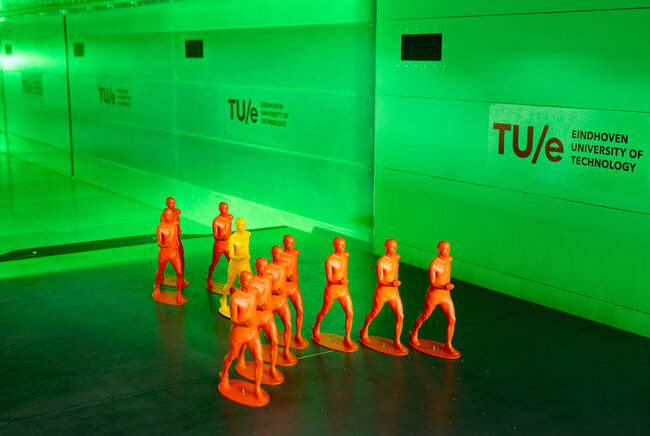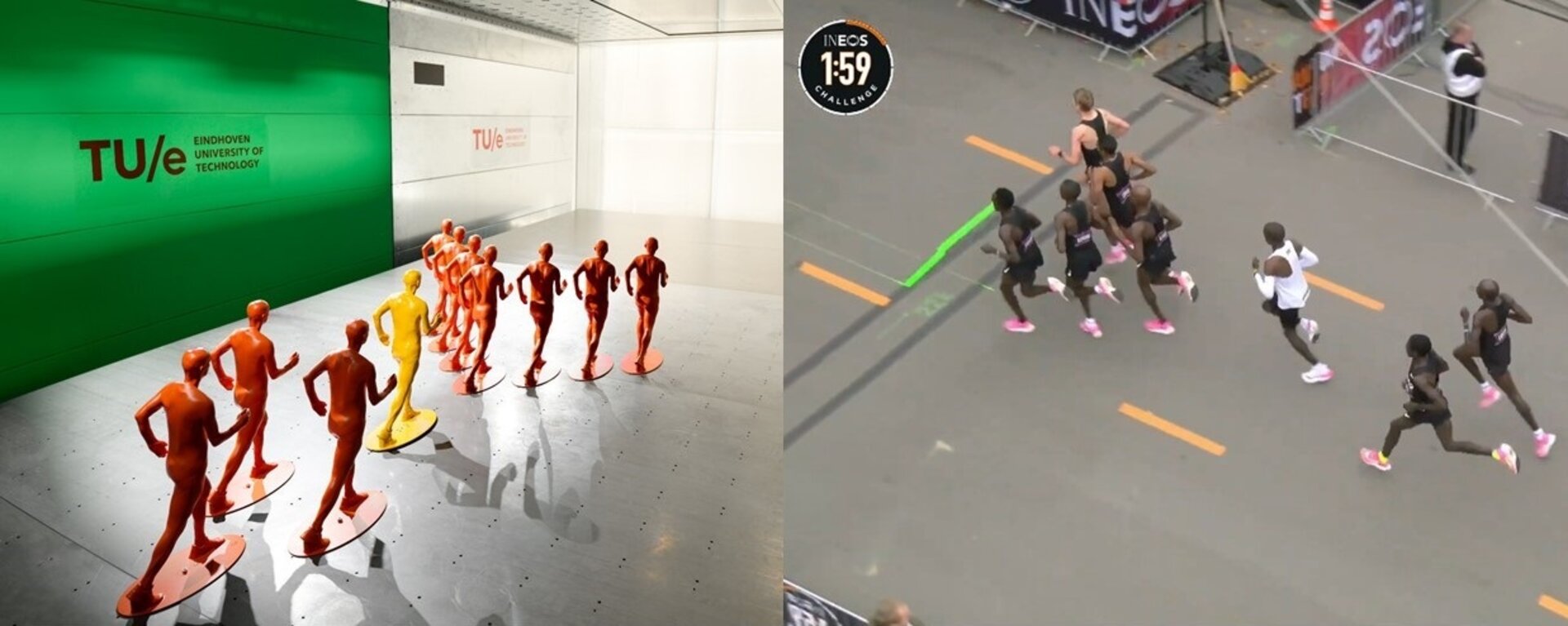TU/e wind tunnel helped break the marathon’s two-hour barrier
Reversed V-formation for the 'rabbits' leads to a 85 % reduction in air resistance

Today, the Kenyan athlete Eliud Kipchoge became the first person to ever complete a marathon within two hours in the so-called INEOS 1:59 Challenge. The Olympic champion and world record holder for the marathon stopped the clock after 1 hours, 59 minutes and 40 seconds. The record attempt was completed under the best possible conditions. Part of this was a special arrangement of runners, who surrounded Kipchoge in order to lower the air resistance as much as possible. The superior performance of this formation was confirmed by wind tunnel tests and computer simulations by Professor Bert Blocken of Eindhoven University of Technology and KU Leuven.
Never before was a human able to run a marathon in under two hours. Kipchoge already tried this in May 2017 at the Formula 1 circuit in Monza, Italy. His time of two hours and 25 seconds was impressive, but just above the magical limit. Today, at the Prater Hauptallee in Vienna, he was successful. This was partly thanks to extensive aerodynamic research conducted at TU Eindhoven.
In long-distance running, aerodynamics plays an important role. The so-called ‘rabbits’ not only serve as pacemakers but also keep the favorites out of the wind. A single rabbit can reduce the air resistance on the second runner by 50 percent. The formation in which these rabbits run determines the total reduction in air resistance that can be achieved.
A hundred formations analyzed
At the previous record attempt in Monza, the rabbits ran in a triangle in front of the athlete, reducing air resistance by an estimated 70 percent. To further reduce this, more than a hundred formations were analyzed using computer simulations by aerodynamics specialist Robby Ketchell of AvantCourse (USA) and later by TU/e and KU Leuven researcher Bert Blocken. The most optimal formations from this analysis were then tested in the wind tunnel of TU Eindhoven.
Against everyone’s expectations, the formation of a reversed V with seven rabbits in front of the athlete and three behind him, proposed by Robby Ketchell, turned out to be the most optimal variant. This reduced Kipoche’s air resistance on paper by 85 percent compared to a runner without rabbits. Blocken: “Two sets of independently-performed computer simulations and the wind tunnel tests all clearly showed this formation to be the best. That was necessary in order to convince the runners of this arrangement.”

Counter-intuitive
The formation may seem counter-intuitive, but according to Blocken, the explanation is logical. “The rabbits have to endure a higher air resistance due to the flow resistance of the funnel, which keeps the athlete Kipchoge out of the wind. In cycling, typically a triangle formation is used at the head of the peloton. This is a good formation when you want to minimize the air resistance for everyone in the group as much as possible. However, for this marathon record, it is only about minimizing the air resistance for Eliud Kipchoge, not for the rabbit. Then this reversed V is superior.”
In addition to the formation of the rabbits, the researchers looked at the distance between the rabbits themselves and between the rabbits and the athlete. The effect of a cyclist next to the athlete (who provided him with food and drink) was also tested in the wind tunnel, as was the effect of a car driving in front of the rabbits with a large clock showing the running times.
This project, which was part of the INEOS 1:59 Challenge, was carried out on behalf of INEOS and in collaboration with Robby Ketchell (AvantCourse), Team INEOS and Global Sports Communication. The wind tunnel tests were carried out in the wind tunnel of TU Eindhoven. TU Eindhoven and KU Leuven’s computer simulations were performed using ANSYS Fluent CFD software.